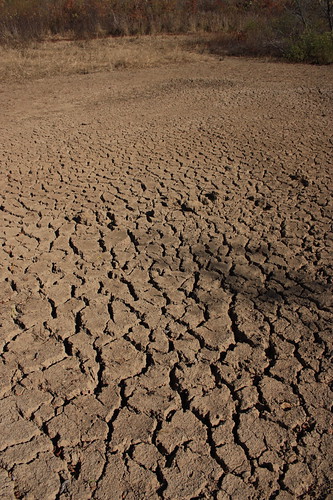Auburn professor and team discover breakthrough climate process that will improve society’s ability to prepare and mitigate effects of long-term drought
Article body
Sanjiv Kumar, assistant professor in the School of Forestry and Wildlife Sciences at Auburn University, led a team of researchers who recently discovered soil-moisture re-emergence, a phenomenon that experts say will have a profound impact on climate predictability science, particularly in the long-term forecasting of drought.
The team’s findings were recently published in the Journal of Climate.
“The soil moisture re-emergence process discovered in this study provides a foundational basis for developing an early warning system for drought, which is a multibillion-dollar event,” Kumar said, citing the 2012 drought that spread devastation along a broad section of the U.S. and resulted in an economic loss of $30 billion, largely from the agricultural sector.
Re-emergence is the idea that the memory of the land is not just at the surface, but beneath the surface as well and can serve as a predictor of future water availability.
The collaborative effort includes Kumar’s work at Auburn along with Matt Newman of the Boulder, Colorado-based NOAA Earth System Research Laboratory, or ESRL, and his colleagues Yu Wang and Ben Livneh at the University of Colorado Boulder.
Kumar, who joined the Auburn faculty in March 2017, began working on the project in 2016, when he was a National Research Council associate at NOAA ESRL in Boulder.
He and his co-researchers plan to continue their studies on this phenomenon.
Newman, a senior research scientist in the Physical Sciences Division of ESRL, said his prior research has primarily focused on climate forecast models based on temperature patterns in the Pacific Ocean. This study’s model took similar factors and applied them to activity in soil.
“The argument tended to be that things were much more ocean-driven,” Newman said, adding that scientists often concentrate on a few months’ predictability, rather than a full year.
Puneet Srivastava, director of the Auburn University Water Resources Center and an expert in water resources and climate variability problems, said the new research will have a great impact in the field.
“Through their novel research, Dr. Kumar and his co-authors are challenging the conventional thinking that root zone soil moisture anomalies persist only for a few months,” said Srivastava, who was not involved in the soil-water re-emergence study.
“They are demonstrating that greater memory, in the order of several months to over a year, in soil moisture anomalies exist in the layer immediately below the root zone, which has potential to enhance interannual-to-decadal variability in droughts.”
School of Forestry and Wildlife Sciences Dean Janaki Alavalapati said this discovery will affect climate science in the years to come.
“The findings that Dr. Kumar and his team have made in this research are compelling and could result in substantially improved predictability of drought, leading to preventative measures and more effective warning systems that could save billions of dollars and positively impact the lives of people affected by drought each year,” Alavalapati said.
Kumar said this discovery provides potential answers to societally relevant climate science questions including the prediction of drought, its severity and intensity, and the role soil-moisture processes and their interaction with the atmosphere play in long-term drought
“This study can help farmers, natural resource managers and policy makers by letting them better prepare and mitigate effects of long-term drought,” Kumar said. “This is a major breakthrough in terms of how we see land in climate predictability science.”
(Written by Teri Greene)
Related Media
Media interested in this story can contact Communications Director Preston Sparks at (334) 844-9999 or preston.sparks@auburn.edu.
The Auburn University College of Forestry, Wildlife and Environment is a flagship institution for natural resources-based degrees including natural resource management, geospatial and environmental informatics and sustainable biomaterials and packaging. The school serves as the backbone for Alabama’s $30 billion+ forest, wildlife and natural resources related enterprises. Its mission is to create next-generation professionals and leaders, to develop new knowledge and disseminate science-based solutions to our clientele to improve the social, economic and environmental well-being of citizens in Alabama and beyond.





